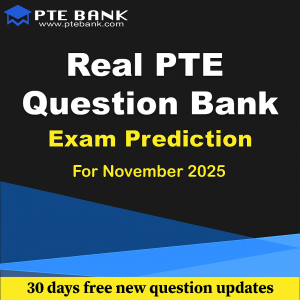Almost every exam has its own patterns of questions, if you want to master PTE test, you must get know its pattern first.
To put this into perspective, candidates who have taken PTE Academic Test several times may be aware of some questions are repeatedly showed during the exam, this is because the official PTE question database is limited and each instance of the test is directly randomized from this question bank.
Our PTE Prediction File is to record as much as of the official PTE question database, and with quality assurance measure we can guarantee a minimum of 70% similar questions of our question bank in the PTE exam.
Here are TOP 3 frequently asked PTE Reorder Paragraphs Questions from the recent exams (September 2021).
1. Playwrights
- Playwrights come to their craft with different aesthetic sensibilities.
- They create recognizable worlds with troubling relevance to human behavior and social themes.
- Others dismiss the “illusion of the real” to engage us in political arguments or absurdist metaphors.
- Thornton Wilder and Tennessee Williams, on the one hand, and Bertolt Brecht and Samuel Beckett, on the other, are playwrights with very different approaches to empathy and aesthetic distance.
- However, these writers have in common their means of artistic expression – the play.
2. English Agricultural Revolution
- Historians are now agreed that beginning in the 17th century and continuing throughout the 18th century, England witnessed an agricultural revolution.
- English (and Dutch) farmers were the most productive farmers of the century and were continually adopting new methods of farming and experimenting with new types of vegetables and grains.
- They also learned a great deal about manure and other fertilizers.
- In other words, many English farmers were treating farming as a science, and all this interest eventually resulted in greater yields.
3. Photogrammetry
- Photogrammetry involves taking hundreds of photos of an object at slightly different angles and ‘stitching’ them together to create an interactive digital 3D model.
- The process is already being used by the University of Aberdeen’s anatomy department to create digital models of organs and other body parts to aid teaching and learning for young doctors.
- Now the same technology is being used to create virtual replicas of artefacts within the University’s museum’s collections, including an ancient Egyptian mummified cat, prehistoric skulls and ancient Greek pottery.
- These artefacts are rarely handled as they are so fragile. Photogrammetry lets the public and students get to see them close-up and in very high detail.
For more real exam PTE questions and brand 9 answers, check out “PTE Real Exam Predicted Questions”.



